The year 2019 was an eventful year in the tech industry resplendent with several defining moments like when Xiaomi launched the Mi 9 as the first Snapdragon 855 model. The Huawei P30 also made its entrance, taking mobile photography to another level. In terms of cost-effective pricing, Redmi continued to blaze the trail but Vivo‘s iQOO join the trail. Realme also delivered some cost-effective smartphones this year. 
Of all the features that made the headlines, 5G dominated. The new technology is expected to usher in a new vista in the mobile phone industry. It also played a key role in all the Systems-on-Chip we saw this year as OEMs strive not to be left behind. Here’s AnTuTu’s review of all the major mobile phone SoCs released in 2019. Their ratings are based on several criteria such as flagship performance, technology innovation, cost-effectiveness and others. Do not tat this rating is restricted to Android phone SoCs and doesn’t include Apple’s.
The major Android mobile phone SoCs include Qualcomm’s Snapdragon, Huawei’s Kirin, MediaTek’s, and Samsung’s Exynos. The SoCs from these fabless chipmakers comes with several improvements such as high performance, high refresh rates, high pixels, and 5G. technology.
AnTuTu 2019 SoC Awards: Strongest performance – Snapdragon 855 Plus
Unlike previous years when only one flagship was launched, this year’s Qualcomm also launched the Snapdragon 855 Plus with stronger GPU performance, which quickly became the flagship standard in the second half of 2019. With an average score of 480,000 (Antutu Evaluation V8), the Snapdragon 855 Plus emerged as the SoC with the best performance.
The Snapdragon 855 Plus is built using a 7nm process. The CPU and Snapdragon 855 are also based on the Kryo 485 architecture modified from the Cortex-A76 magic, but the main frequency has been increased from 2.84GHz to 2.96GHz. The GPU uses Adreno 640, the frequency has been increased from 585MHz of Snapdragon 855 to 675MHz, and supports a series of technologies such as Vulkan 1.1 API, 10bit HDR, 4K HDR display (support external), H.265 specification and VP9 decoding.
Although the Snapdragon 855 Plus does not have a built-in 5G baseband, its performance is obvious to all. 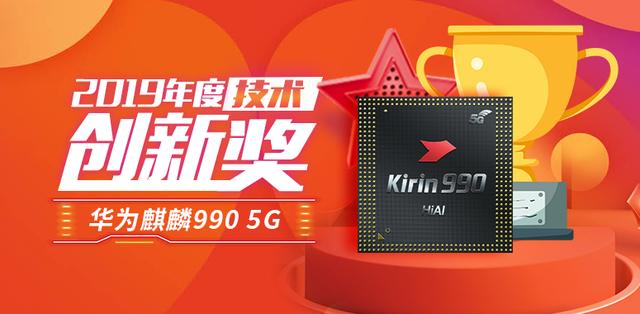
Technology Innovation Award: Huawei Kirin 990 5G
This year’s Huawei Kirin SoC is undoubtedly the most spectacular. The latest Kirin 990 5G is the industry’s first integrated 5G baseband SoC, which in a sense surpasses the world’s top manufacturers.
The Kirin 990 5G is manufactured using TSMC’s 7nm + EUV extreme ultraviolet lithography process, integrating up to 10.3 billion transistors. It is the industry’s first mobile SoC to break the 10 billion mark in terms of transistors. The CPU part integrates two 2.86GHz Cortex-A76 cores, two 2.36GHz Cortex-A76 cores and four 1.95GHz Cortex-A55 cores. The GPU has been upgraded to a 16-core Mali-G76 MP16, which has 6 cores more than the Kirin 980. Baseband supports 2/3/4 / 5G networks, NSA / SA dual-mode, TDD / FDD full frequency bands, and full Netcom 5G.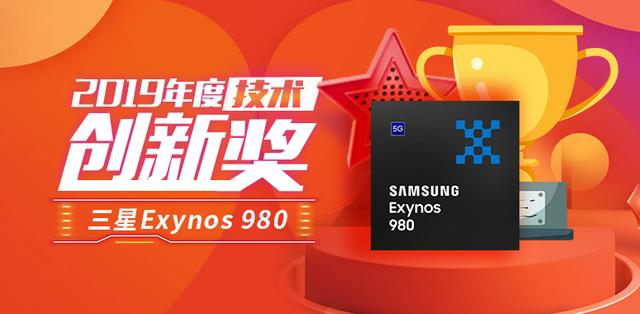
Technology Innovation Award: Samsung Exynos 980
There is no doubt that the integration of 5G baseband is a recognized development trend of future manufacturers. Samsung Exynos 980 is a mid-end SoC with built-in 5G baseband and supporting dual-mode 5G.
The Exynos 980 is built on an 8nm process. It has two 2.2GHz Cortex-A77 cores and six 1.8GHz A55 cores. The GPU is Mali-G76 MP5. In terms of communication performance, the Exynos 980 can be the fastest in the sub-6GHz band with 5G network speed of up to 2.55Gbps, 4G speed of up to 1Gbps, and dual-mode parallel speed of up to 3.55Gbps.
EDITOR’S PICK: First Samples from the 108MP Mi Mix Alpha is here & we are not impressed!
Although Samsung Electronics disbanded the self-developed CPU team this year, this is not necessarily bad news, because this means that Samsung Exynos is returning to the arms of ARM again, which may further improve the power consumption of the SoC.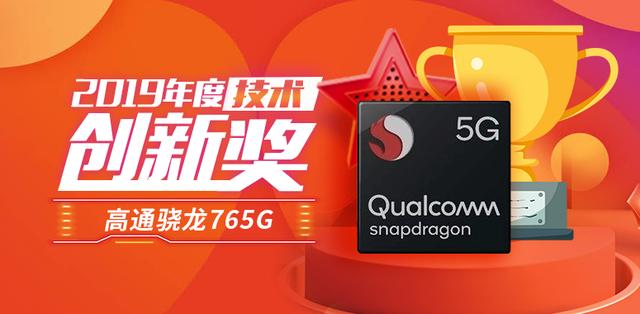
Technology Innovation Award: Qualcomm Snapdragon 765G
At the Snapdragon Technology Summit in December, Qualcomm released the annual flagship Snapdragon 865, along with the Snapdragon 765 / 765G, and if you look closely at their characteristics, you will find that the two SoCs are integrated in process and baseband. It is excellent in many aspects and even surpasses the flagship Snapdragon 865.
As the Snapdragon 765 is not yet on the market but the Snapdragon 765G has already been utilised on a commercial smartphone – OPPO Reno 3 Pro. The SoC uses a 7nm EUV process, built-in eight-core Kryo 475 CPU, and a three-cluster architecture of 1 + 1 + 6, including a 2.4GHz super Large core, a 2.2GHz performance core, six 1.8GHz efficiency cores, GPU is Adreno 620, and the same architecture as the new flagship Snapdragon 865.
In terms of paper parameters, the Snapdragon 765G is the largest upgrade since the release of the Snapdragon 7 series. The GPU performance has increased significantly by 40% and the AI computing power has increased by 100%. It is straightforward to say that its performance is basically close to Qualcomm ’s Snapdragon 845.
Since this SoC is listed on the last day of this year, we are also included in this list. From its comprehensive performance, we can see that the Snapdragon 765G is likely to become the hottest match for mid-range 5G mobile phones next year.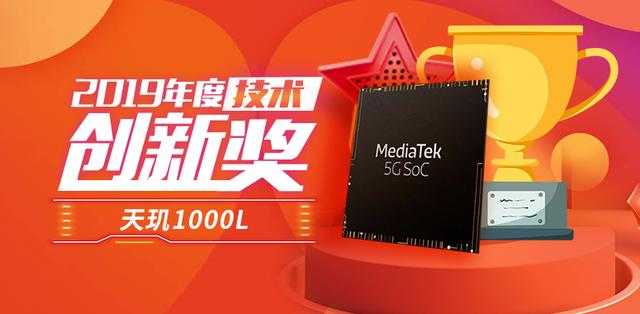
Technological Innovation Award: Dimensity 1000L
MediaTek, which has been quiet for a while, came up with a brand new Dimensity series this year including its first 5G SoC – Dimensity 1000. OPPO first launched Dimensity 1000L at the end of the year onboard the Reno3 series. The Dimensity 1000L may be viewed as a lower version of the Dimensity 1000 but is equally an impressive SoC.
The Dimensity 1000L is built with a 7nm process, has built-in eight cores, and uses the Cortex-A77 architecture, while the GPU uses the G77 architecture. The SoC also comes with built-in 5G baseband, and supports NSA / SA dual-mode 5G.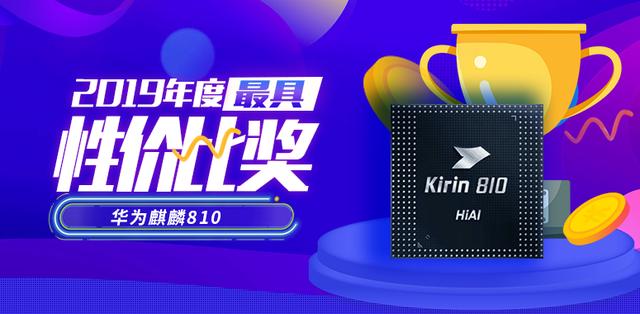
Most cost-effective award: Huawei Kirin 810
In June this year, Huawei released the Kirin 810. The biggest change is that it no longer uses the Cambrian NPU instead, it adopts Huawei’s self-developed DaVinci architecture. At the same time, it uses a 7nm process, making Kirin the world’s first to have two 7nm SoCs.
The Kirin 810-powered Honor 9X si presently sold for as low as 1,199 yuan which makes it one of the most cost-effective SoC around.
The Kirin 810 is built using a 7nm process, built with two 2.27GHz Cortex-A76 cores and six 1.88GHz A55s. The GPU is upgraded to Mali-G52 for customization and supports Kirin Gaming + technology.
Most cost-effective award: Helio G90T
MediaTek changed its trend this year and successively launched Helio G90T, Dimensity 1000 and other mid-to-high-end SoCs. Among them, Helio G90T is positioned at the mid-range in the same league with Qualcomm’s Snapdragon 730 series.
The chipset was first launched onboard the Redmi Note 8 Pro and that remains the only model with the SoC. In terms of pricing, the Redmi Note 8 Pro also sells for around 1,199 yuan as at press time. That is yet another dope offer as the device equally comes with a 64MP Sony camera sensor.
The Helio G90T is built with a 12nm process. The CPU uses the same Cortex-A76 architecture as the Kirin 810. It has two ARM Cortex-A76 cores and six Cortex-A55 small cores. The frequency is up to 2.05GHz. The GPU is equipped with ARM Mali-G76. 3EEMC4, clocked at 800MHz, and built-in dual-core APU, combined with CPU and GPU can provide 1TMACs AI computing power.
For 2020, we see 5G playing a more prominent role in the calibre of the flagship to midrange and budget SoCs that would be released.
UP NEXT: Xiaomi Haylou SmartWatch Hands-On: A $14 Smart Band in Disguise
(source)







